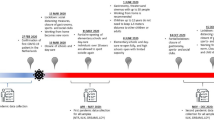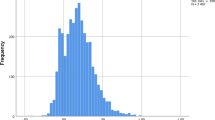Abstract
Worldwide, approximately one in eight children or adolescents suffers from a mental disorder. The present study was designed to determine the self-reported prevalence of mental health problems in children aged 6–11 years across eight European countries including Italy, France, Germany, the Netherlands, Lithuania, Bulgaria, Romania, and Turkey. Data were drawn from 6245 children participating in the School Children Mental Health in Europe (SCHME) study and a large cross-sectional survey in France. Self-reported child mental health was assessed using the Dominique Interactive (DI). Overall, 22.0% of children were identified per their own evaluation as having at least one mental disorder, ranging from 16.4% in the Netherlands to 27.9% in Bulgaria. The prevalence of internalizing disorders was 18.4% across countries and ranged from 11.8% in the Netherlands to 24.3% in Turkey. The prevalence of externalizing disorders was lower with an average of 7.8%, ranging from 3.5% in Turkey to 10.5% in Bulgaria. Combining samples across European countries, 1 in 5 children reported internalizing problems and 1 in 12 children externalizing problems. The net completion rates of 4.1–74.3% preclude conclusions about national differences in prevalence rates.
Similar content being viewed by others
References
Goodman A, Heiervang E, Fleitlich-Bilyk B, Alyahri A, Patel V, Mullick MI et al (2012) Cross-national differences in questionnaires do not necessarily reflect comparable differences in disorder prevalence. Soc Psychiatry Psychiatr Epidemiol 47(8):1321–1331. https://doi.org/10.1007/s00127-011-0440-2
Achenbach TM, Rescorla LA, Ivanova MY (2012) International epidemiology of child and adolescent psychopathology I: diagnoses, dimensions, and conceptual issues. J Am Acad Child Adolesc Psychiatry 51(12):1261–1272
Achenbach TM, Edelbrock CS (1983) Manual for the child behavior checklist: and revised child behavior profile. University of Vermont, Department of Psychiatry, Burlington, VT
Crijnen AA, Achenbach TM, Verhulst FC (1997) Comparisons of problems reported by parents of children in 12 cultures: total problems, externalizing, and internalizing. J Am Acad Child Adolesc Psychiatry 36(9):1269–1277
Rescorla L, Achenbach T, Ivanova MY, Dumenci L, Almqvist F, Bilenberg N et al (2007) Behavioral and emotional problems reported by parents of children ages 6 to 16 in 31 societies. J Emot Behav Disor 15(3):130–142
Merikangas KR, Nakamura EF, Kessler RC (2009) Epidemiology of mental disorders in children and adolescents. Dialogues Clin Neurosci. 11(1):7
Maughan B, Collishaw S, Meltzer H, Goodman R (2008) Recent trends in UK child and adolescent mental health. Soc Psychiatry Psychiatr Epidemiol 43(4):305–310
Kovess-Masfety V, Husky MM, Keyes K, Hamilton A, Pez O, Bitfoi A et al (2016) Comparing the prevalence of mental health problems in children 6–11 across Europe. Soc Psychiatry Psychiatr Epidemiol 51(8):1093–1103. https://doi.org/10.1007/s00127-016-1253-0
Vostanis P, Graves A, Meltzer H, Goodman R, Jenkins R, Brugha T (2006) Relationship between parental psychopathology, parenting strategies and child mental health. Soc Psychiatry Psychiatr Epidemiol 41(7):509–514
Bird HR, Gould MS, Staghezza B (1992) Aggregating data from multiple informants in child psychiatry epidemiological research. J Am Acad Child Adolesc Psychiatry 31(1):78–85
Achenbach TM, McConaughy SH, Howell CT (1987) Child/adolescent behavioral and emotional problems: implications of cross-informant correlations for situational specificity. Psychol Bull 101(2):213
Jensen P, Rubio-Stipec E, Canono G, Bird H, Dulcan M, Schwab-Stone M et al (1999) Parent and child contributions to diagnosis mental disorder: are both informants always necessary? J Am Acad Child Adolesc Psychiatry 38:1569–1579
Salbach-Andrae H, Klinkowski N, Lenz K, Lehmkuhl U (2009) Agreement between youth-reported and parent-reported psychopathology in a referred sample. Eur Child Adolesc Psychiatry 18(3):136–143
Grills AE, Ollendick TH (2003) Multiple informant agreement and the anxiety disorders interview schedule for parents and children. J Am Acad Child Adolesc Psychiatry 42(1):30–40
Rothen S, Vandeleur CL, Lustenberger Y, Jeanprêtre N, Ayer E, Gamma F et al (2009) Parent–child agreement and prevalence estimates of diagnoses in childhood: direct interview versus family history method. Int J Methods psychiatric Res 18(2):96–109
Van der Meer M, Dixon A, Rose D (2008) Parent and child agreement on reports of problem behaviour obtained from a screening questionnaire, the SDQ. Eur Child Adolesc Psychiatry 17(8):491–497
Canning EH (1994) Mental disorders in chronically ill children: case identification and parent-child discrepancy. Psychosom Med 56(2):104–108
De Los Reyes A, Kazdin AE (2005) Informant discrepancies in the assessment of childhood psychopathology: a critical review, theoretical framework, and recommendations for further study. Psychol Bull 131(4):483
Salbach-Andrae H, Lenz K, Lehmkuhl U (2009) Patterns of agreement among parent, teacher and youth ratings in a referred sample. Euro Psychiatry. 24(5):345–351
Sourander A, Helstelä L, Helenius H (1999) Parent-adolescent agreement on emotional and behavioral problems. Soc Psychiatry Psychiatr Epidemiol 34(12):657–663
Ialongo NS, Edelsohn G, Kellam SG (2001) A further look at the prognostic power of young children’s reports of depressed mood and feelings. Child Dev 72(3):736–747
Warren SL, Dadson N (2001) Assessment of anxiety in young children. Curr Opin Pediatr 13(6):580–585
Rebok G, Riley A, Forrest C, Starfield B, Green B, Robertson J et al (2001) Elementary school-aged children’s reports of their health: a cognitive interviewing study. Qual Life Res 10(1):59–70
Mishara BL (1999) Conceptions of death and suicide in children ages 6–12 and their implications for suicide prevention. Suicide Life Threat Behav 29(2):105–118
Valla JP, Bergeron L, Berube H, Gaudet N, St-Georges M (1994) A structured pictorial questionnaire to assess DSM-III-R-based diagnoses in children (6–11 years): development, validity, and reliability. J Abnorm Child Psychol 22(4):403–423
Valla JP, Bergeron L, Bidaut-Russell M, St-Georges M, Gaudet N (1997) Reliability of the Dominic-R: a young child mental health questionnaire combining visual and auditory stimuli. J Child Psychol Psychiatry 38(6):717–724
Valla JP, Bergeron L, Smolla N (2000) The Dominic-R: a pictorial interview for 6- to 11-year-old children. J Am Acad Child Adolesc Psychiatry 39(1):85–93. https://doi.org/10.1097/00004583-200001000-00020
Goodman R (1997) The strengths and difficulties questionnaire: a research note. J Child Psychol Psychiatry 38(5):581–586
Husky MM, Keyes K, Hamilton A, Stragalinou A, Pez O, Kuijpers R et al (2017) Maternal Problem Drinking and Child Mental Health. Subst Use Misuse 1–9. doi:10.1080/10826084.2017.1312448
Kovess-Masfety V, Lesinskiene S, Husky MM, Boyd A, Ha P, Fermanian C et al (2017) Risk factors for child mental health problems in Lithuania: the role of parental nationality. Compr Psychiatry 73:15–22
Kuijpers RC, Otten R, Vermulst AA, Pez O, Bitfoi A, Carta M et al (2015) Reliability, factor structure, and measurement invariance of the Dominic Interactive across European Countries: cross-country utility of a child mental health self-report. Psychol Assess. https://doi.org/10.1037/pas0000139
Kovess V, Carta MG, Pez O, Bitfoi A, Koç C, Goelitz D et al (2015) The School Children Mental Health in Europe (SCMHE) Project: design and first results. Clin Pract Epidemiol Ment Health. 11(7):113–123. https://doi.org/10.2174/1745017901511010113
Shojaei T, Wazana A, Pitrou I, Kovess V (2009) The strengths and difficulties questionnaire: validation study in French school-aged children and cross-cultural comparisons. Soc Psychiatry Psychiatr Epidemiol 44(9):740–747
Shojaei T, Wazana A, Pitrou I, Gilbert F, Bergeron L, Valla JP et al (2009) Psychometric properties of the Dominic Interactive in a large French sample. Can J Psychiatry Revue 54(11):767–776 (Canadienne de psychiatrie.)
Kuijpers R, Otten R, Vermulst A, Pez O, Bitfoi A, Carta M et al (2014) Cross-country construct validity of the ‘Dominic Interactive’. Eur J Public Health 24(suppl 2):046
Ware JE, Sherbourne CD (1992) The MOS 36-item short-form health survey (SF-36). I. Conceptual framework and item selection. Med Care 30(6):473–483
Kovess V (2004) The state of mental health in the European Union. European Commission, Luxemburg
Treutler CM, Epkins CC (2003) Are discrepancies among child, mother, and father reports on children’s behavior related to parents’ psychological symptoms and aspects of parent–child relationships? J Abnorm Child Psychol 31(1):13–27
Van der Toorn SL, Huizink AC, Utens EM, Verhulst FC, Ormel J, Ferdinand RF (2010) Maternal depressive symptoms, and not anxiety symptoms, are associated with positive mother–child reporting discrepancies of internalizing problems in children: a report on the TRAILS Study. Eur Child Adolesc Psychiatry 19(4):379–388
Vander Stoep A, Mccauley E, Thompson KA, Herting JR, Kuo ES, Stewart DG et al (2005) Universal emotional health screening at the middle school transition. J Emot Behav Disord 13(4):213–223
Mojtabai R, Olfson M (2008) Parental detection of youth’s self-harm behavior. Suicide Life Threat Behav 38:60–72
Velez CN, Cohen P (1988) Suicidal behavior and ideation in a community sample of children: maternal and youth reports. J Am Acad Child Adolesc Psychiatry 27:349–356
Brauner CB, Stephens CB (2006) Estimating the prevalence of early childhood serious emotional/behavioral disorders: challenges and recommendations. Public Health Rep 121(3):303–310
Polanczyk GV, Salum GA, Sugaya LS, Caye A, Rohde LA (2015) Annual research review: a meta-analysis of the worldwide prevalence of mental disorders in children and adolescents. J Child Psychol Psychiatry 56(3):345–365
Nolen-Hoeksema S, Girgus JS (1994) The emergence of gender differences in depression during adolescence. Psychol Bull 115:424–443
Kovess-Masfety V, Van Engelen J, Stone L, Otten R, Carta MG, Bitfoi A et al (2017) Unmet need for specialty mental health services among children across Europe. Psychiatric Serv 68(8):789–795
Acknowledgements
This study was funded by the European Union, Grant number 2006336.
Author information
Authors and Affiliations
Corresponding author
Ethics declarations
Conflict of interest
On behalf of all the authors, the corresponding author states that there is no conflict of interest.
Electronic supplementary material
Below is the link to the electronic supplementary material.
Rights and permissions
About this article
Cite this article
Husky, M.M., Boyd, A., Bitfoi, A. et al. Self-reported mental health in children ages 6–12 years across eight European countries. Eur Child Adolesc Psychiatry 27, 785–795 (2018). https://doi.org/10.1007/s00787-017-1073-0
Received:
Accepted:
Published:
Issue Date:
DOI: https://doi.org/10.1007/s00787-017-1073-0




